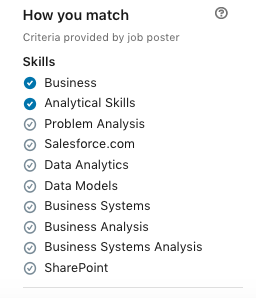Why is it crucial to continuously refresh your resume? Our talent professionals share a few reasons to consider.
The Resume Refresh Explained
(No, it’s not a lesson in suffering.) Instead, think of the resume refresh as an edit to your job story. How will talent professionals know what you’ve done and when? A hiring manager spends just over six seconds on a resume before deciding to pass or learn more, according to Ladders Inc. Do you feel confident in your hook?
The hook! That’s why you’re here. You’ve come all this way and built a strong portfolio of projects, but it’s time to move on, explore a new project. However, the task of refreshing your resume stands in the way of what’s next.
We have good news: The talent team at The Carrera Agency believes in a personal approach when working with technology and design consultants, and that starts with you. We help you secure the project you want. (Start by reviewing popular interview questions for technology projects.)
First, let’s address the thoughts running through your head: ‘I know I’m qualified. I can do this job in my sleep. I will apply with the same resume I used two years ago.’ Wait! Not so fast.
The reality is that you have minimal time to convince the hiring manager of your qualifications (around seven seconds). You must explain why you are the best candidate. Your resume is the ticket to the big dance, i.e., the interview. If your resume doesn’t accurately tell where you are in your journey, well, no dancing for you.
Similar to Statefarm, ‘we know a thing or two because we’ve seen a thing or two.’ In this case, we’ve witnessed qualified consultants miss out on the interview due to an outdated resume. Word on the street was excellent, and professional referrals used the term “unicorn.” But the paper version of the person’s story didn’t resonate; it was incomplete. A refreshed resume creates cohesion and clearly describes who you are, and what you’ve done.
Whether the scenario we described has happened to you, or you intend to prevent it from happening, make these edits before applying to that new gig.
The Resume Summary (Introduction)
The resume summary serves as an introduction to the hiring manager. And since you only have about seven seconds to make a memorable first impression, these first few sentences must be informational and impactful.
Why is the resume summary critical to your success? Since technology consultants spend significant time working in one field, the summary provides a focused lens on what the resume entails, i.e., the accurate professional title and accomplishments. Although the resume content demands most of the page, the summary is a convincing pitch that hooks the reader and influences them to learn more about the candidate.
To refresh your resume introduction (or create a new one altogether), write down the past projects you executed over the past three to five years, and note which skills you developed. Then, write down three to five significant accomplishments based on the projects and skills you highlighted.
Finally, combine your title, skills, and accomplishments into a brief paragraph or bulleted list of three items that answer the question, ‘why are you the best person for the role?’ And remember, keywords are IMPORTANT. Use the specific skills in the job posting to describe your background and experience.
Example: Begin with: Accomplished web developer and project lead with 10+ years of experience building corporate websites and apps using HTML, CSS, and JavaScript. And continue with two more statements that cover measurable accomplishments as a recognized developer.
Experience Section (The Story)
The hook worked — you grabbed the reader’s attention and set the stage for your career story. Here, beneath each position and project title and dates of employment, demonstrate your success in past roles by stating accomplishments and contributions.
Remember, a useful resume refresh entails removing irrelevant job details and including more measurable results, i.e., numbers. Less is more in the experience section. If you can list four to five strong bullet points for each position and leave adequate white space (makes the resume more comfortable to read), you’ve done well.
Example: Led (that is the exact word that most people screw up on!) three project implementations over a 14 months that resulted in a 10% departmental cost reduction and 15% revenue growth.
Aside from showing measurable results and removing unrelated information, add all required skills for each position. Carefully read the project details and write down the primary and secondary skills mentioned. Then, try to incorporate all of them in the experience section of the resume. If your experience didn’t require a specific skill highlighted in the new role, list a transferable option that serves as a close second.
Where can you find the specific skills for any given job? LinkedIn is a helpful resource that displays a list of required skills on some postings. (See example below.) You can also search for similar positions on LinkedIn and find the core skills that may be required. If you can’t find specific information, carefully read the description, and note the five to seven skills mentioned the most. The hiring manager will look for these on your resume and cover letter.

Be Detailed and Edit Everything
At this point, your intro is engaging, and your story is clear and concise, so what’s left to consider before submitting your resume? The fine details that make you the BEST candidate for the job.
First, don’t forget to clearly explain how you fulfill each of the requirements listed in the job description. Do this for the most recent project in your experience section. If experience in an Agile/Scrum environment is a requirement, then include (at least) one detailed bullet highlighting your relevant experience.
For example: Adhered to best Agile/Scrum practices, assisted with writing user stories and epics, tracked project status in Jira, ran daily stand-ups, and led retrospectives at the end of each two-week iterative sprint cycle. Oversaw the development team to ensure backlog items were maintained and completed.
Adhered to best Agile/Scrum practices, assisted with writing user stories and epics, tracked project status, ran daily stand-ups, led retrospectives at the end of each iterative sprint cycle, and helped prioritize product backlog items.
More Details to Consider
Next, comb your resume for acronyms and technical jargon. Don’t assume that hiring managers know that you have all the necessary skills based on experience. For example, If the role is for a database position, go ahead and list both stored procedures and PL/SQL. For a business analyst role, display the acronym and the word phrase (at least the first time shown): business requirements documents (BRD).
Lastly, capitalize all industry-specific and technical terms properly. For example, if you’re a SharePoint developer, don’t forget to capitalize S and P. And before you press save for the last time, check verb tense from beginning to end. Keep it consistent.
If you want to be competitive in today’s job market, you have to refresh your resume often. When a company is serious about finding good people, talent managers move quickly, so they don’t have the luxury of deciphering resume content for hundreds of candidates.
Instead, give hiring managers exactly what they are looking for from the first point of contact they have with you — your resume. Use the easy-to-implement tips outlined above before applying to an open role. And connect with The Carrera Agency on LinkedIn for helpful, professional resources.
